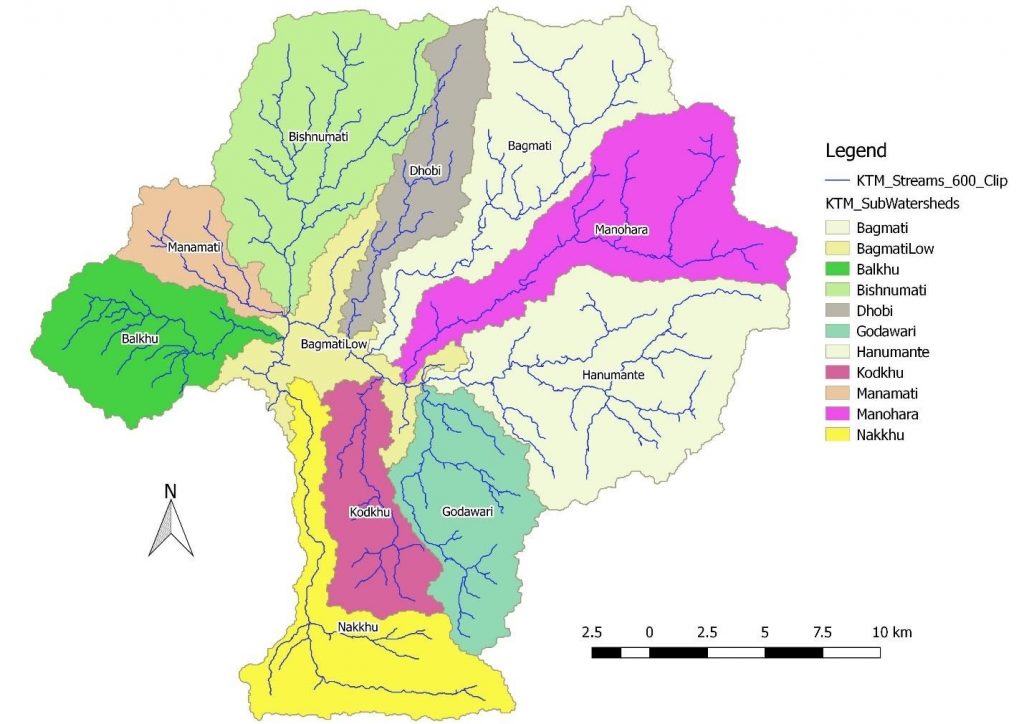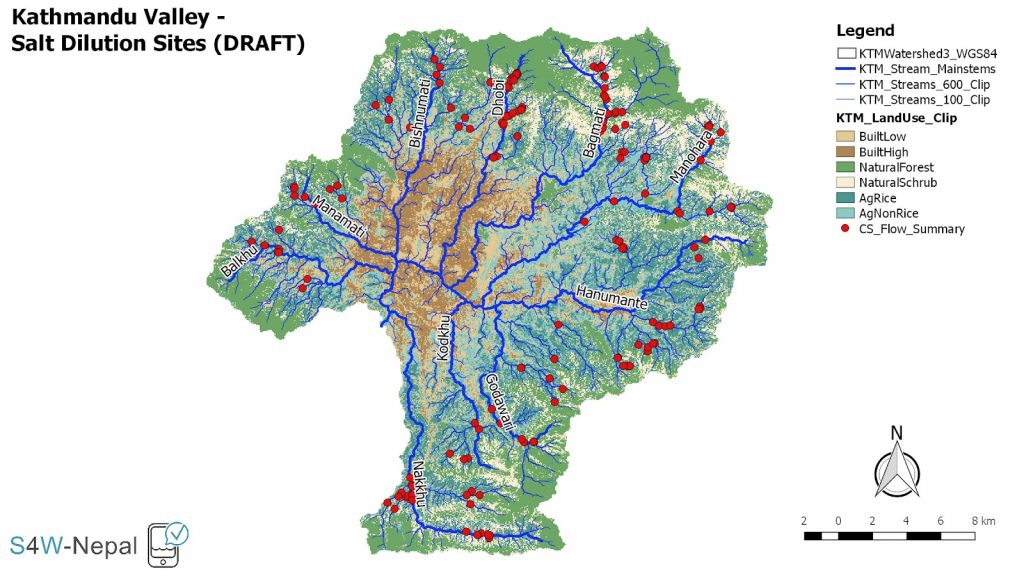Citizen Science 2018 Pre-Monsoon Flow Campaign

In April of 2018, S4W-Nepal launched its first ever Pre-monsoon Citizen Science Flow Campaign. The main objective of this campaign was to assess the spatial variations in discharge of Bagmati River and its tributaries within Kathmandu Valley using the salt dilution technique (there are many variations of this technique, but more information on the technique we utilized can be found here). Since the primary source of water recharge in Kathmandu Valley is from the monsoon precipitation, which only lasts for about four months (roughly from June to September), we decided it would be interesting to see the pre- and post-monsoon variation of discharge in the rivers and springs of Kathmandu Valley. Additionally, even without monsoon precipitation patterns, the diverse geology of this small valley will have an influence on the spatial variability of discharge. It is another factor to consider in our investigation into spatial variation.
We believe that this research will further understanding of water availability within the Kathmandu Valley and enable water managers to make better decisions in the future.

Twenty-five students from the Khwopa College of Engineering in Bhaktapur were mobilised in ten different watersheds (Figure 2) of the Kathmandu Valley. In total, across all the watersheds, discharge was measured at more than 150 locations (Figure 3). Since the salt dilution technique is only suitable for high-gradient well mixed rivers with low Electrical Conductivity (EC), measurements were only performed in upstreams of rivers with River Quality Classes (RQC) ranging between I and III. Click here to review a recent publication in which we classified the RQC of all nine perennial tributaries of the Bagmati River using the Rapid Stream Assessment (RSA) technique. We are currently working on processing and analyzing these data, and we hope to include them in a peer-reviewed research article in the future. Additionally, S4W-Nepal is currently developing an online web application that will be used to house and provide data collected through S4W-Nepal efforts such as this. Once it is complete, these data will be uploaded and freely available for the benefit of all.

Our sincere thanks goes to Khwopa College of Engineering for providing us with a group of enthusiastic young researchers to successfully complete this campaign; photos from our training on the salt dilution technique can be seen below (Figure 4). We hope this campaign and the hands-on field experience allowed participants to go beyond their practical, classroom lessons on the subject of “Hydrology” that they had recently completed. Completing this campaign was another milestone for S4W-Nepal towards furthering our three pronged approach of Research, Education, and Employment.

Currently, water resource management is one of the key issues for the Kathmandu Valley. Water resources could be managed properly through spatial and temporal quantification of water quality and quantity. Usual methods of streamflow measurement included installation of water level loggers, streamflow measurement by velocity meters, stage-discharge relationships, etc. However, these methods require trained professionals and significant funding, and they are difficult to apply at a large scale. With recent advances in mobile technologies, data collection efforts that take advantage of citizen scientists and mobile technology can be more easily applied at a larger scale. S4W-Nepal aims to combine citizen science with simple data collection techniques to generate spatially distributed hydrological data. You can find out more about our work at our website here.
Citizen Science 2018 Pre-Monsoon Flow Campaign Read More »

